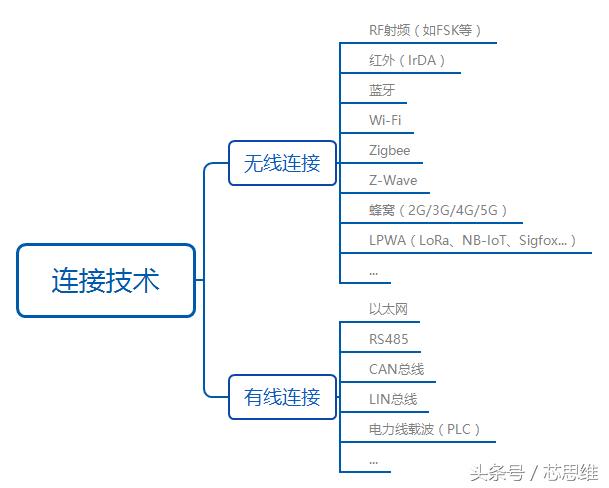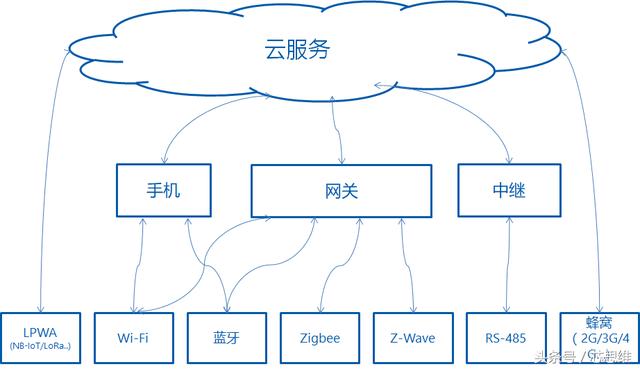During the 2017 CES Asia 2017 held at Shanghai New International Expo Center, OFU's U+ related person announced that Haier U+'s proposal for interoperability with OCF passed the standard project of the OCF Alliance. Haier, as one of the members of the OCF board of directors, also has practical significance as a global large-scale home appliance brand to establish and promote interconnection standards for IoT devices.
Haier U+ is an open cooperation platform that includes open SDK and API standards. The access of various brand categories and the opening of the platform provide partners with unified standards and resources for developing new applications and new services. Haier U+ adheres to the open concept and is open to all smart devices in the industry. Any product of any brand can be added. The Haier U+ proposal opened the link between Haier U+ ecology and OCF ecology, expanding each other's ecosystem.
Haier U+ Connects to OCF Alliance Standard
The proposal of Haier U+ is actually a U+ bridge, which is mainly used for mutual protocol conversion between Haier U+ equipment and OCF equipment, thus ensuring the interoperability between OCF applications, equipment and Haier U+ equipment. . U+ Bridge solves the problem of cross-protocol interconnection between two different ecosystems.
The following is a schematic diagram of the application of Haier U+ proposal:

Many manufacturers have their own smart home systems in use. Establishing interoperability between the OCF and these ecosystems is the fastest way to extend the OCF ecosystem. Haier incorporated Haier U+ equipment into the OCF ecosystem through this project. This may also encourage other manufacturers to achieve interoperability of their ecosystem with OCF. Through the connection of the OCF standard, each manufacturer's ecosystem interconnection is no longer an "island." Haier U+ Bridge is the bridge connecting different smart home ecosystems.
Open Connectivity Foundation, OCF
In 2016, the two major Internet of Things (IoT) application frameworks promoted the organization of the “Open Internet Alliance†(OIC) and the “AllSeen Alliance†to form a new OCF, becoming the largest open IoT standard besides Apple and Google. The OCF is an industry organization whose mission is to set standards, promote a set of interoperability guidelines, and provide certification programs for the Internet of Things (IoT) devices. It has become one of the largest industry connectivity standards organizations for the Internet of Things, including members of Samsung Electronics, Intel, Microsoft, Qualcomm and Electrolux. There are currently more than 200 member companies.
Different connection standards have caused the fragmentation of the Internet of Things and also caused the problem of interconnection. The merger of the two OIC and AllSeen organizations helped to unify the fragmented, networked IoT standards and ensured the interoperability of connectivity technologies worldwide through technical capabilities and support from numerous vendors.
OCF is trying to achieve the Internet of Things's Internet of Things. The Internet of Things requires easy-to-discover, trusted, and reliable connections. The OCF provides a framework for implementing these requirements through a specification reference implementation and certification program. IoTivity is a normative open source reference implementation developed by different members of the OCF.
Smart home connection technology
Some common connection technologies in smart homes are as follows:

Wired connections require on-site wiring and are easier to route when building or renovating. Wireless technology is more easily accepted in practical applications because of its convenient installation and flexible features in smart homes.
There are many ways to connect devices to the network in smart home applications. The following is a simple schematic diagram of some common connection technologies for network access:

The way in which devices in a smart home are connected to a network is generally direct access and indirect access. There will not be only one manufacturer's product in the family as a connection technology. It is more convenient and flexible for the gateway to perform connection and protocol conversion for different networks. Gateways can integrate multiple technologies to enable cross-protocol interconnection and interworking. Some new technologies, such as Bluetooth 5.0, LPWA (NB-IoT, LoRa), also provide more options for smart home network access.
Haier U+ Bridge can communicate with various connection technologies. It is a bridge that has nothing to do with the underlying communication. It can connect various U+ devices to various connection technologies and provide a convenient bridge. Haier U+ Bridge has also optimized the equipment for different resources. Local resource-restricted devices use the CoAP protocol, and the volume of data connected to the cloud uses the MQTT protocol.
Wireless connection chip
In the face of numerous connection technology applications, in addition to the need for unified standards, it is also necessary to connect and provide support for the chips. A chip integrates multiple technologies to implement different connection applications, and is also a feature of future chip development. For the Internet of Things (IoT) wireless connection market, ARM also introduced two wireless IP technologies, one is a Wireless Personal Area Network (WPAN) and the other is a Low-Power Wide-Area Network (LPWAN). In the future there will be products based on ARM Wireless IP.

The chip will integrate more wireless technologies to meet more application connection requirements, better manage more connected devices, and cross-protocol interconnections. The development of wireless chip technology provides a new connection basis for the interconnection of devices.
Smart home enters new stage of industrial ecological construction
In the early days of the development of smart home products, each company established its own connection standard and formed its own small ecosystem. Different manufacturers' products are difficult to interconnect and interoperate. Some powerful companies gradually have the ability to open resources, and also urgently need to expand and connect more fields in order to improve service capabilities.
As the U+ platform launched by home appliance giant Haier, it has cooperated with hundreds of companies and realized the interconnection of products and services. Through excavation and analysis of data, it has produced good economic and social benefits. The interconnection of Haier U+ Bridge and the OCF platform ecosystem has connected the ecology of Haier U+ to the OCF ecosystem, and the OCF ecosystem has also entered the Haier U+ ecosystem. Haier U+Bridge has solved the problem of connecting the platform ecology and making each other ecologically friendly. The system can be interconnected and interoperable to provide more extensive interoperability and open the way for the development of the ecosystem of both parties.
The smart home industry is evolving from product intelligence to platform networking. Haier U+ Bridge puts smart home into a new phase of industrial ecological construction.
Product categories of Vozol, we are specialized electronic cigarette manufacturers from China, Vapes For Smoking, Vape Pen Kits, Vape Cartridge, Smoking Accessories,E-Cigarette suppliers/factory, wholesale high-quality products of Modern E-Cigarette R & D and manufacturing, we have the perfect
after-sales service and technical support. Look forward to your cooperation!
vozol disposable vape,puff bar vozol vape,vozol bar disposable vape kit,pod vozol bar vape,vozol vape pen
Ningbo Autrends International Trade Co.,Ltd. , https://www.ecigarettevapepods.com
